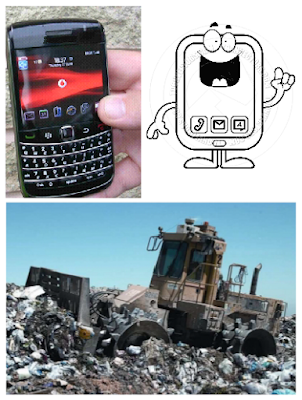'Why won’t my compass work on the other side of the Equator?' This ELI helps pupils to understand the three-dimensional magnetic field of the Earth.
The Earth’s magnetic field is three dimensional in the same way as the field of any magnet. It is because of the Earth’s 3D magnetic field that the magnetic needle of a compass has to be weighted so that it floats horizontally in one hemisphere; but this means that the weight is on the wrong end of the needle for the other hemisphere, so that it doesn’t work there. The vertical component of the Earth’s magnetic field can be shown by a dip needle (constrained to rotate in a vertical plane) or a freely-rotating Magnaprobe TM.
Many more activities about the Earth's magnetism can be found on the website.
Monday 31 October 2016
Monday 24 October 2016
What's the difference between porosity and permeability?
Our new ELI just published is 'Does my rock hold water and will water flow through it?' This activity investigates the differences between porosity and permeability.
The activity can be used in any science or geography lesson where the ability of rocks to hold water or hydrocarbons is being discussed.
There are two activities for your pupils to try and, because they involve chocolate and LegoTM, they are very popular with children!
Related ideas about porosity and permeability can be seen on our website.
The activity can be used in any science or geography lesson where the ability of rocks to hold water or hydrocarbons is being discussed.
There are two activities for your pupils to try and, because they involve chocolate and LegoTM, they are very popular with children!
Related ideas about porosity and permeability can be seen on our website.
Monday 17 October 2016
How thin is the crust we live on?
You can answer the question 'Just how thin is the crust we live on?' by trying this Earthlearningidea - 'Journey to the centre of the Earth - on a toilet roll'
We seldom stop to consider the true scale of many features of the Earth. This activity aims to enable pupils to visualise the thickness of the crust in relation to the rest of the Earth. It also helps them to appreciate the difference in depth between the oceanic crust and the continental crust. It introduces the terms ‘lithosphere’ and ‘asthenosphere’ to help in understanding plate tectonic theory.
Many more activities about the structure of the Earth and about plate tectonics can be found on our website.
We seldom stop to consider the true scale of many features of the Earth. This activity aims to enable pupils to visualise the thickness of the crust in relation to the rest of the Earth. It also helps them to appreciate the difference in depth between the oceanic crust and the continental crust. It introduces the terms ‘lithosphere’ and ‘asthenosphere’ to help in understanding plate tectonic theory.
Many more activities about the structure of the Earth and about plate tectonics can be found on our website.
Tuesday 11 October 2016
Use the view of your local area to tune yourself into the local geology
Our new ELI published yesterday is 'The view from the site'. Use the view from any viewpoint, to ask the questions provided. These will help your pupils to pick out any landscape-scale evidence for the local geology and its structure.
All the ‘lumps and bumps’ of a landscape are either natural or the result of human activity; larger features can only be natural. This activity uses these features as clues to the underlying geology and geological structure. The photographs used in the activity focus on inland features but at the coast the link
between the coastal features and the geological structure is even clearer.
This activity could be extended to include erosional features such as river, glacial and fault-bound valleys and also depositional features such as fenland and tidal flats.
Pupils always enjoy being out of school and this activity is great fun.
All the ‘lumps and bumps’ of a landscape are either natural or the result of human activity; larger features can only be natural. This activity uses these features as clues to the underlying geology and geological structure. The photographs used in the activity focus on inland features but at the coast the link
between the coastal features and the geological structure is even clearer.
This activity could be extended to include erosional features such as river, glacial and fault-bound valleys and also depositional features such as fenland and tidal flats.
Pupils always enjoy being out of school and this activity is great fun.
Monday 3 October 2016
Why should I recycle my mobile phone?
A popular ELI in September was the last in our 'Be a mineral expert' series - 'Recycle your mobile (cell) phone.'
This activity is based on an information sheet, which prompts pupils to think about the materials and energy which go into the manufacture and use of a mobile phone, and why they should consider carefully what happens to the phone when its useful life is over.
Other activities about minerals can be found on our website.
This activity is based on an information sheet, which prompts pupils to think about the materials and energy which go into the manufacture and use of a mobile phone, and why they should consider carefully what happens to the phone when its useful life is over.
Other activities about minerals can be found on our website.
Subscribe to:
Posts (Atom)




